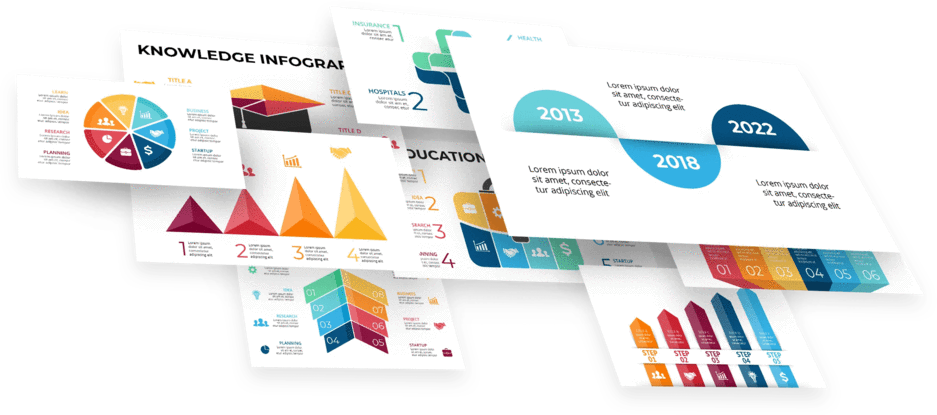How To Write a Project Plan
Oct 19, 2022
Every project is unique. As a result, all project managers must take project planning with the utmost seriousness.
Your project plan should provide vital information such as its goals, timeline, budget, team members, scope, deliverables, etc. It will also ensure a clear roadmap and help you avoid mishaps.
You are in the right place if you want to learn how to write a solid project plan. We have covered all the necessary details to ensure you have a smooth project planning process.
What Is Project Planning?
Project planning is an essential step in project management. As a project manager, this is where you identify your project scope, goals, and method of execution. The project planning phase results in a project plan.
What Is a Project Plan?
A project plan is a group of documents that provide a blueprint for a project's execution. It covers all the stages, tasks, and resources required to guarantee a successful project.
Your plan should tell the project stakeholders the scope, schedule, deliverables, costs, milestones, etc. It should also answer any questions anyone might have about the project.
Here are some things you should have in your project plan:
- Communication plans
- Work breakdown structure
- Timelines
- Milestones
- Project dependencies
- Resources including funds, tools, workers, etc.
The Importance of Project Plans.
Project plans are essential for several reasons. To start with, a plan helps you define your goals and deliverables. It ensures that all stakeholders know what you want to achieve and expect of them.
Additionally, a project plan is vital for resource management. Not only will it ensure that you have all the necessary resources, but it will also ensure that they are well-managed.
Another importance of project planning is risk management. You will be able to foresee potential risks and look for solutions. Finally, a well-planned project has little chance of experiencing scope creep and overbudgeting.

How To Create a Project Plan.
As we have mentioned, no project is the same. However, you can create an effective plan for any project by following these steps:
Goals and Objectives.
You are launching this project to achieve some goals and objectives. So, start by listing them.
Your goals and objectives will serve as a guide for your project plan. They will also help everyone involved understand the purpose of the project. Your team members will be more motivated when they can see the bigger picture instead of working blindly.
Use Metrics.
Don't just include your goals in your project plan. Ensure that they are measurable by attaching metrics. Success or performance metrics help project managers to track progress toward goals.
Knowing when you will achieve your project goals will be hard without metrics. For instance, you may launch a marketing campaign to attract new clients. But what number is your target? 100? 150? 200? Such a goal is unclear and immeasurable.
On the other hand, a goal to bring in 150 new customers over the next two by running ads on Instagram is specific and measurable. Such a goal is called a SMART goal. Alternatively, you may use key performance indicators (KPIs).
Create Your Project Team.
The next step is to choose your project team members and assign roles to them. Your team's cohesion will be vital to your project's success. So, get the best hands and ensure everyone knows what to do.
Who will be handling what task? Is any individual going to be in multiple teams? Who will handle the approval of each task after completion? These are some of the questions you should answer at this stage.
A project management tool like the RACI matrix can help you clarify the roles and responsibilities of each team member.
Budgeting.
Project planning is never complete without a project budget. Regardless of your project's feasibility, you will need a certain amount of money to execute it. Improper budgeting may result in delays or abandonment of the project.
Consider the costs of materials, equipment, labor, professional services, contingencies, etc. How much will cover these expenses? What departments will be paying for this project?
By creating your project budget early, you can allocate the funds smartly and prepare for unforeseen expenses.
Milestones and Task Dependencies.
Include milestones in your project timeline to mark important achievements. Hitting these milestones during the project will show you are still on course to achieve the intended results. Milestones can also help you identify issues early.
An example of a milestone is quality assurance testing in product development.
Additionally, mention task dependencies in your project plan. Your team members shouldn't start a dependent task until they complete the preceding tasks. Project dependencies show a precise sequence of tasks and help keep things organized and error-free.
For instance, let's picture an email marketing campaign. Your writers shouldn't start working on the email copy until the research team conducts market research.

Project Schedule and Timeline.
Project timelines and schedules are essential in a project management plan. They show vital stakeholders the start dates, deadlines, priority tasks, important milestones, etc.
Consider arranging your project tasks chronologically so your team can execute them orderly. You should also ensure that you assign enough time to complete each task.
Communication Plan.
To guarantee project success, everyone involved must be able to exchange information promptly and effectively. A communication plan will come in handy in this regard.
It will ensure that everyone remains updated on the project's progress and any new event. An effective communication plan will also be helpful in emergencies.
Some Essential Project Terms.
We have included some terms you should know as a project manager. They include:
Project Scope.
A project's scope refers to all required to ensure its successful completion. To develop a project scope, you must understand the objectives and your client's desires.
Project Charter.
A project charter is a document that offers an overview of the entire project. It shows the project objectives, scope, and key stakeholders. You must get approval for your project charter before working on the more detailed project plan.
Work Breakdown Structure.
A work breakdown structure (WBS) is an approach that breaks down complex projects into smaller deliverables. Creating these smaller chunks makes project execution faster and simpler.
Project Management Software.
Project management software is a computer program that helps project managers to plan, organize, and manage various aspects of a project.
Download a Project Plan Template.
Simplify your project planning process by downloading a project plan template from Simple Slides. Our infographics contain several project management tools, such as Gantt charts, timelines, and road maps. The template is fully editable and compatible will all presentation software.
Frequently Asked Questions:
What is a project plan?
A project plan is a blueprint of all the activities a team executes during a project life cycle.
How can I create a project plan?
You can create a project plan by downloading our template and entering information such as project schedule, deadline, scope, budget, deliverables, etc.
Where can I download a free project plan PowerPoint template?
You can download a free project plan PowerPoint template from Simple Slides using our free trial.
Related Articles:
Get A Free Sample of Our Award-Winning PowerPoint Templates + University
Get A Free Sample of Our Award-Winning PowerPoint Templates + University
Join our mailing list to receive the latest news and updates from our team.
Don't worry, your information will not be shared.
We hate SPAM. We will never sell your information, for any reason.




